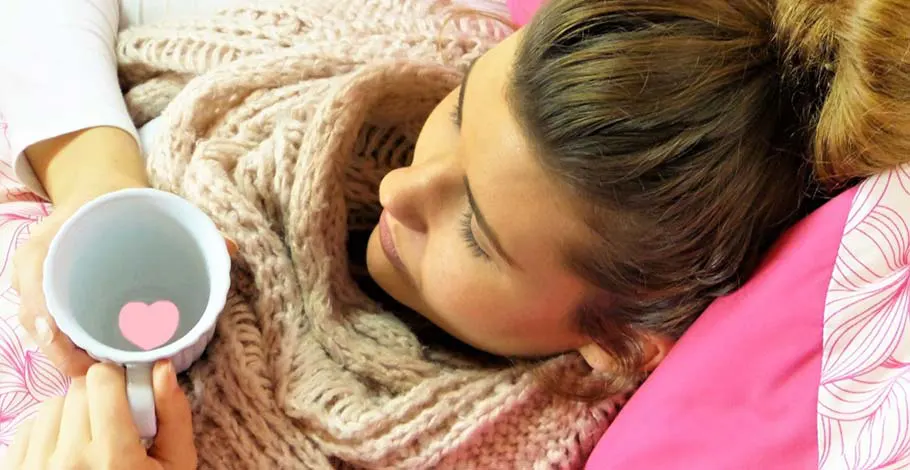Having a vagina that is itchy, uncomfortable, and stinky is a unique sort of awful. It's bad enough that bacterial vaginosis is so common, but it's much worse when the treatment doesn't work.

The condition is quite prevalent, as is its recurrence. While researchers investigate potential new remedies, here's what you need to know.
What is bacterial vaginosis?
The overgrowth of bacteria in the vaginal tract is the root cause of bacterial vaginosis (BV). There are bacteria in every healthy vagina. These bacteria tend to keep each other in check. The “bad” bacteria may sometimes outnumber and overwhelm the “good” bacteria. Because of this, you may get bacterial vaginosis in your vagina.[1]
Vaginal discharge with a “fishy” odor may signify bacterial vaginosis. Some women may also have vaginal discomfort. Some people may show no signs of having BV at all.
How Common is Bacterial Vaginosis?
Only around three million of the 21 million women in the United States who are thought to have bacterial vaginosis each year experience symptoms.[2]
For women and designated females at birth (AFAB) between the ages of 15 and 44, bacterial vaginosis is the most frequent vaginal condition. About 35% of those women will get BV at some point. If you are Black, the rate will be greater.
When and who may get BV?
Bacterial vaginosis may affect most women. Sexual active women are more likely to contract it. Those who have never had sexual activity are less likely to develop it. Some people's bodies may produce too much of the BV-causing bacteria.
Possible risk factors for developing BV are if you are
- Pregnant
- Stop using condoms
- Using a contraceptive IUD in your uterus
- Change your sexual partner or have multiple sex partners
- Taking antibiotics
- Douching
When does bacterial vaginosis start showing up?
Bacterial vaginosis may affect up to 84% of the population without noticeable symptoms. If you have symptoms, you could experience the following:
- Vaginal bleeding that is off-white, gray, or green
- Vaginal discharge with a fishy odor, particularly after sexual activity
- Itching or irritation in the genitalia
- Experiencing pain when you have to urinate
Symptoms of bacterial vaginosis are similar to those of other vaginal conditions. If you suspect a vaginal infection, it's best to see a doctor to confirm whether or not it's BV.
Where does bacterial vaginosis (BV) come from?
There are many different kinds of bacteria (a microbiome) in your vagina. BV is brought on by a shift in the bacteria's equilibrium.
Speaking about the common causes of Bacterial vaginosis, Soma Mandal, a board-certified internist and women's health specialist explained that it occurs when there's an imbalance in the natural bacteria found in your vagina. Normally, there's a mixture of “good” bacteria (lactobacilli) and “bad” bacteria (anaerobes) in the vagina. But with BV, the balance is disrupted, leading to an overgrowth of the “bad” bacteria.
The bacteria in your vagina may be affected by anything that alters the vagina's natural chemistry. This is why douching and unprotected intercourse is risk factors for acquiring BV. There is no risk of contracting BV using a public hot tub, pool, or toilet. Even touching an object that someone with BV has touched won't give you the disease.
Can you spread bacterial vaginosis?
Although bacterial vaginosis is not contagious, it is more likely to occur in those who engage in sexually active behaviors.
What kind of sexually transmitted infection (STI) does bacterial vaginosis fall under?
Although bacterial vaginosis is not spread via sexual contact, it is associated with it. Sex may alter the vaginal PH. This increases the likelihood of bacterial overpopulation.
What is the difference between bacterial vaginosis and a yeast infection?
Bacterial vaginosis and yeast infections are both causes of abnormally heavy vaginal discharge. How to tell them apart is as follows:
- BV is most often diagnosed by the presence of discharge with a “fishy” odor. Yeast infection discharge is often odorless but has the consistency of cottage cheese.
- Itchiness or irritation of the vaginal lining is not a common side effect of BV. Candida infections cause these symptoms.
- Nonprescription medication: Over-the-counter (OTC) drugs are effective against yeast infections. Antibiotic treatment for BV requires a visit to a doctor.[3]
How is bacterial vaginosis diagnosed?
A medical professional is required to make a diagnosis of bacterial vaginosis. If you see any symptoms of BV, don't hesitate to make an appointment with your doctor. Your doctor will inquire about your health and ask whether you've ever had any STIs or vaginal infections during your session. They could also:
- Check your pelvic area for indications of infection, such as increased discharge or foul-smelling, white, or grayish discharge. Your healthcare professional will insert gloved fingers into your vagina.
- Collect a sample of your menstrual fluid: Your healthcare practitioner will use a speculum to examine your genitalia. The next step is for them to collect vaginal fluid using a swab. Bacteria kinds are identified by sending the fluid to a lab.
- Vaginal fluid samples are used in the diagnosis of bacterial vaginosis. Several other tests may be performed on that specimen to diagnose bacterial vaginosis.
- Examining your vaginal fluid on a glass slide under a microscope is called a “wet mount.”
- A whiff test is when your doctor smells your vaginal discharge to see whether it has a fishy odor.
Treatment
A brief course of antibiotics is the typical treatment for bacterial vaginosis. Antibiotics are a kind of medicine that is used to treat bacterial infections. Flagyl (metronidazole) and clindamycin are the first-line antibiotics. Both are quite successful in treating BV and have relatively few adverse effects.
The following are the recommended first-line treatment options you can get:
- Metronidazole 500 milligrams (mg) twice a day for seven days.
- For five days, use metronidazole 0.75% vaginal gel once daily.
- For seven days, use Clindamycin 2.0% vaginal cream before night.
- Clindamycin vaginal suppositories or Tindamax (tinidazole) pills are further options. Despite the medications' success, recurrence is frequent and may need numerous treatments to eradicate the condition.
Some side effects include nausea, stomach discomfort, cough, sore throat, runny nose, and a metallic taste in the mouth.
Several supportive treatment options, in addition to antibiotics, may be beneficial. Probiotics (good living microorganisms found probiotic pills and in yogurt) may aid in preventing a recurrence. Boric acid (available as a vaginal suppository and pill) is an age-old treatment gaining fresh medical attention.
Wear looser trousers or skirts during treatment to minimize vaginal moisture and heat, which may stimulate bacterial development. Applying a cool towel to the vagina or spraying it with cold water may also help to relieve irritation and swelling.
3 Sources
We review published medical research in respected scientific journals to arrive at our conclusions about a product or health topic. This ensures the highest standard of scientific accuracy.







 This article changed my life!
This article changed my life! This article was informative.
This article was informative. I have a medical question.
I have a medical question.
 This article contains incorrect information.
This article contains incorrect information. This article doesn’t have the information I’m looking for.
This article doesn’t have the information I’m looking for.